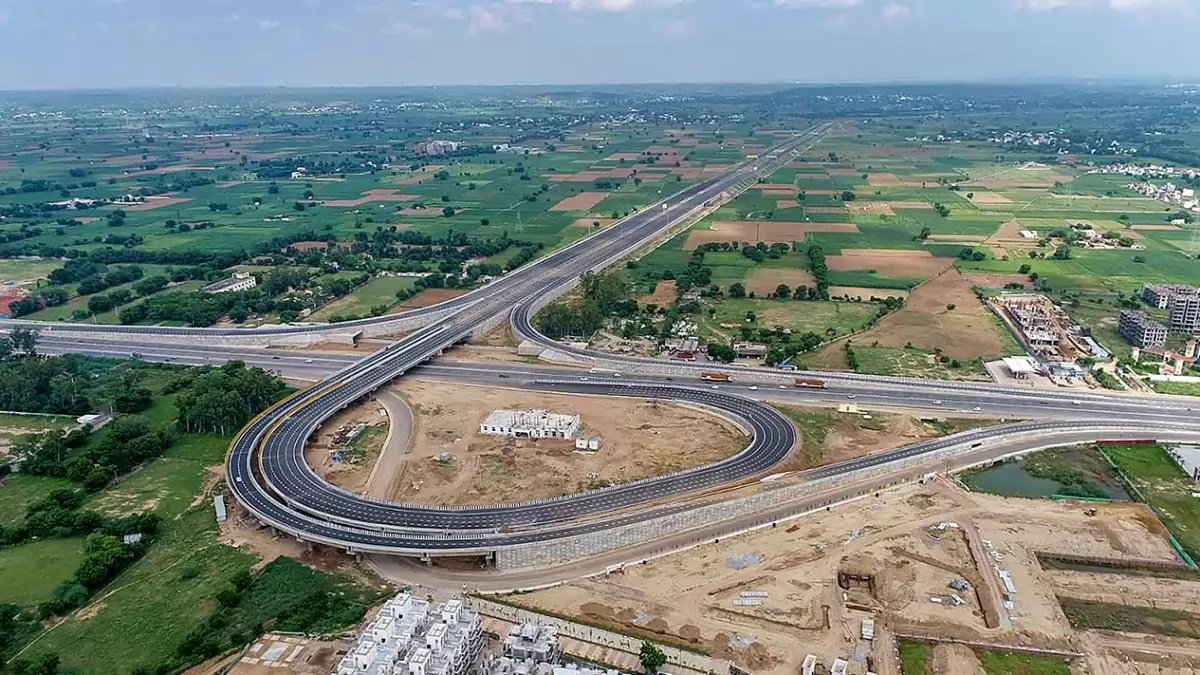India’s road network is the second largest in the world, encompassing approximately 63.32 lakh km of roads as of March 2019. This represents a significant growth from the 54.02 lakh km recorded in March 2014. Nitin Gadkari, the Union Minister of Road Transport and Highways, conveyed this information in a written response to the Lok Sabha today.
Furthermore, he highlighted that the Ministry of Road Transport and Highways has experienced a substantial increase in its budgetary allocation, rising from around Rs. 31,130 crore in 2013-14 to Rs. 2,76,351 crore in 2023-24. The capital expenditure on National Highways (NHs) has also witnessed a manifold surge, escalating from approximately Rs. 51,000 crore in 2013-14 to over Rs. 2,40,000 crore in 2022-23.

Quality and standards
The length of the NH network in the country has experienced a significant growth, increasing by 1.6 times from 91,287 km in March 2014 to 1,46,145 km at present. Furthermore, there has been a substantial improvement in the quality of roads, particularly in the 4 lane and above NH network, which has increased by more than 2.5 times from 18,371 km in 2014 to 46,720 km. Additionally, the proportion of less than 2 lane NHs has decreased from 30% to 10% of the total NH network, resulting in a reduction in length from 27,517 km to 14,350 km.
India’s Road Revolution
The Ministry has made the decision to prioritize the advancement of High Speed Access controlled NHs in order to enhance the efficiency of the country’s logistics. Additionally, a policy has been implemented to enhance all NHs based on traffic demands, while maintaining a minimum standard of Two Lane with paved shoulders, except in the ecologically sensitive Himalayan region. In this area, the development plan takes into account geological and environmental factors.
Projects
The Ministry has initiated the implementation of 21 green field access-controlled corridors, which include expressways. These corridors have a combined length of approximately 3,658 km, and a significant portion of the work has already been completed. In addition to this, the Ministry has successfully finished various flagship projects or their respective sections, which are now open to traffic, ensuring smoother movement. Some notable examples include the Delhi-Dausa – Lalsaut section (229 km) and the entire section in Madhya Pradesh (210 km) of the Delhi-Mumbai Expressway, the Amritsar-Bhatinda-Jamnagar (470 km) corridor in Rajasthan, the Suryapet – Khammam section of the Hyderabad-Vishakhapatnam corridor, and the Indore-Hyderabad stretch spanning 175 km. Furthermore, the Ministry has accomplished the construction of the New Brahamputra Bridge near Tejpur in Assam on NH-37A (old), the Kaladan Multi Modal Transit Transport Project in Mizoram, and the Shillong Nongstoin-Tura section of NH-44E & NH 127B in Meghalaya. Several other significant corridors, such as the Vadodara – Mumbai Section of the Delhi – Mumbai Expressway, the Raipur – Vishakhapatnam Economic Corridor, the Char Dham Projects in Uttarakhand, the Trans Arunachal Highway (NH-13, NH-15, and NH-215) in Arunachal Pradesh, and the Imphal-Moreh section in Manipur, are also currently in progress. Additionally, the Dimapur – Kohima section is being developed to enhance connectivity.

Logistics and environment
As part of the Bharatmala Pariyojna (BMP) initiative, the Ministry has identified 35 Multimodal Logistics Parks (MMLPs) to enhance the logistics efficiency of the Indian economy. In the first phase of BMP, 15 MMLPs have been prioritized for development.
Furthermore, the Ministry has taken proactive measures towards environmental sustainability. Since 2016, approximately 3.46 crore trees have been planted, and municipal waste has been utilized for embankment construction. , India’s road connectivity has improved consistently over the years and road transportation has become a focus of rapid development. Additionally, waste plastics have been incorporated in Bituminous construction, and waste slag has been utilized in Cement Concrete Construction. These green initiatives aim to achieve carbon neutrality and promote sustainable development.
